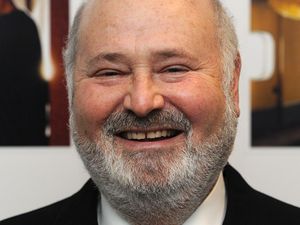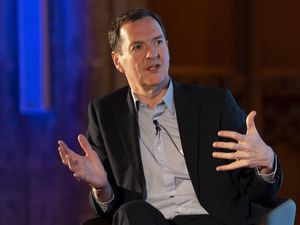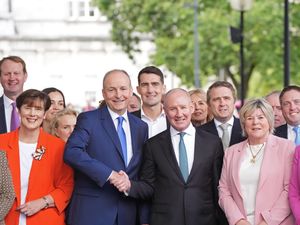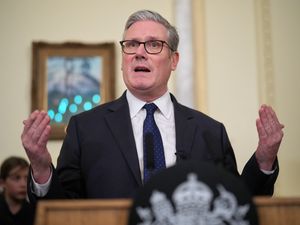Hammond unveils tax cuts as he hails ‘end of austerity’
Jeremy Corbyn dismisses the Chancellor’s claims in his ‘broken promise Budget’
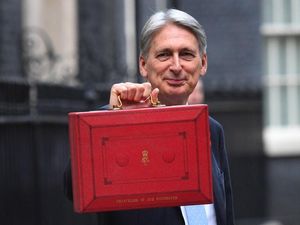
Philip Hammond used his Budget to signal how he will end austerity, with increased Whitehall spending and early tax cuts for millions of workers.
The Chancellor, boosted by improved public finance forecasts, promised a “brighter future” after years of constraint imposed following the financial crash.
The measures announced in his Budget included a new £400 million levy aimed at global tech giants such as Google and Facebook.
But while tech firms will face a new tax, Mr Hammond promised a package of help for the nation’s high streets which have suffered as shoppers have moved online.
Around 32 million Britons will be given an income tax cut as Mr Hammond announced that promised increases in the tax-free personal allowance will happen in April 2019 rather than 2020.
In the last scheduled Budget before Brexit, Mr Hammond said: “We are at a turning point in our history and we must resolve to go forwards, not backwards and work together to build a Britain we can all be proud of.”

Mr Hammond said his Budget was aimed at helping “the strivers, the grafters and the carers” and would pave the way for a “brighter future”.
But Labour leader Jeremy Corbyn labelled Mr Hammond’s statement as a “broken promise Budget”.
He told MPs: “Whatever the Chancellor claims today, austerity is not over.”
The Chancellor set out a five-year plan for departmental spending which will see Whitehall budgets rise by an average of 1.2% a year.
Setting out his income tax cuts, he said the personal allowance will rise to £12,500 from April 2019 and the higher rate threshold will rise to £50,000.
Mr Hammond said it would put “£130 in the pocket of a typical basic rate taxpayer”.

In response to criticism from all sides – including former prime minister Sir John Major – Mr Hammond promised billions to address concerns about the rollout of the flagship Universal Credit welfare reform.
The measures include £1 billion over five years to help the transition on to the new system and a £1,000 increase in the amount people can earn before losing benefits at a cost of up to £1.7 billion a year.
While most of his Budget involved loosening the purse strings, Mr Hammond announced the new tax on tech giants to make sure they “pay their fair share towards supporting our public services”.
He added that the levy would not be online-sales tax on goods ordered over the internet as “such a tax would fall on consumers of those goods – and that is not our intention”.
But Dame Margaret Hodge, a former chairwoman of the Commons Public Accounts Committee who repeatedly challenged tech giants over their taxes, said the £400 million tax was “simply gesture politics”.
With an eye on Brexit negotiations, Mr Hammond announced an extra £500 million for preparations for the UK’s departure from the EU in March 2019.
And he hinted that an emergency Budget could take place in the Spring “if the economic or fiscal outlook changes materially in-year”.
But he said agreement with Brussels would result in a “deal dividend” for the economy.

As well as the tax cuts and increased departmental spending, the Chancellor set out one-off bonuses for defence, schools and local authorities after being given positive forecasts for the public finances by the OBR.
– The OBR upgraded its forecast for GDP growth in 2019 from 1.3% to 1.6%, then 1.4% in 2020 and 2021; 1.5% in 2022; and 1.6% in 2023.
– Borrowing this year will be £11.6 billion lower than forecast at the Spring Statement, at 1.2% of GDP, and is then set to fall from £31.8bn in 2019/20 to £26.7bn in 2020-21, £23.8bn in 2021/22, £20.8bn in 2022/23 and £19.8bn in 2023/24.
– Debt peaked in 2016/17 at 85.2% of GDP and then falls in every year of the forecast from 83.7% this year; to 74.1% in 2023/24, allowing the Government to meet its target to get debt falling three years early.

In response to the security threats facing the UK, Mr Hammond promised an extra £1 billion to the Ministry of Defence and £160 million to fund counter-terrorism policing.
He also promised extra funding for health and social care – confirming extra cash for mental health services and £650 million for English councils struggling to cope with rising care bills.
Schools in England will be handed £400 million, an average of 10,000 per primary school and £50,000 for secondary schools.
A £420 million fund will help local highway authorities repair potholes and carry out other maintenance tasks.
In a major shift, the Chancellor also promised to abolish the use of the private finance initiative (PFI) and PF2 funding.
Labour leader Mr Corbyn said: “What we’ve heard today are half measures and quick fixes while austerity grinds on.
“And far from people’s hard work and sacrifices having paid off, as the Chancellor claims, this Government has frittered it away in ideological tax cuts to the richest in our society.”

